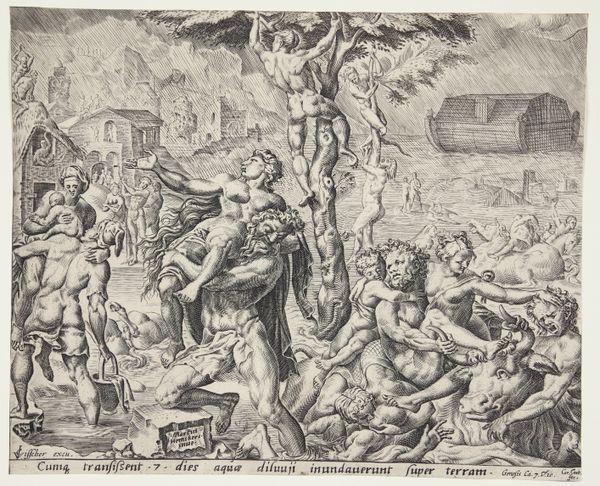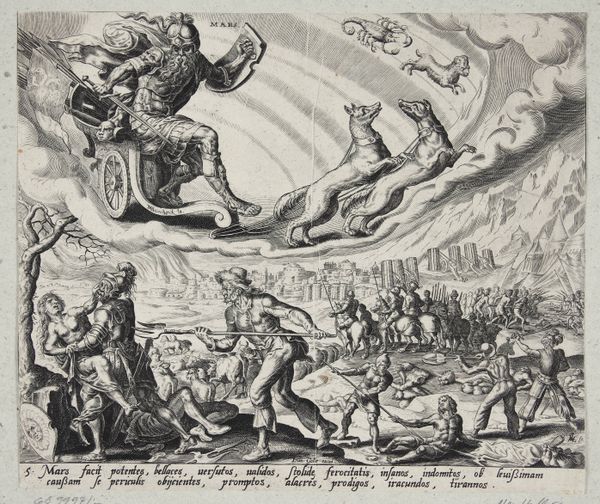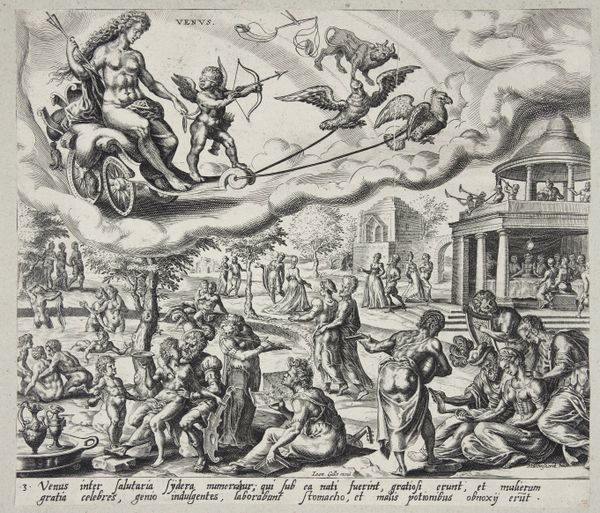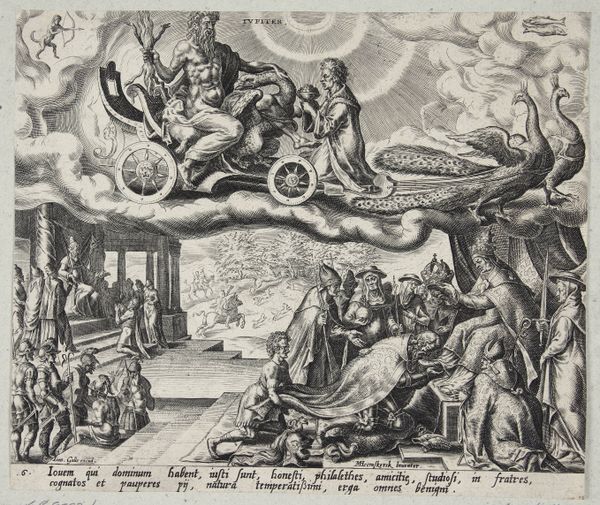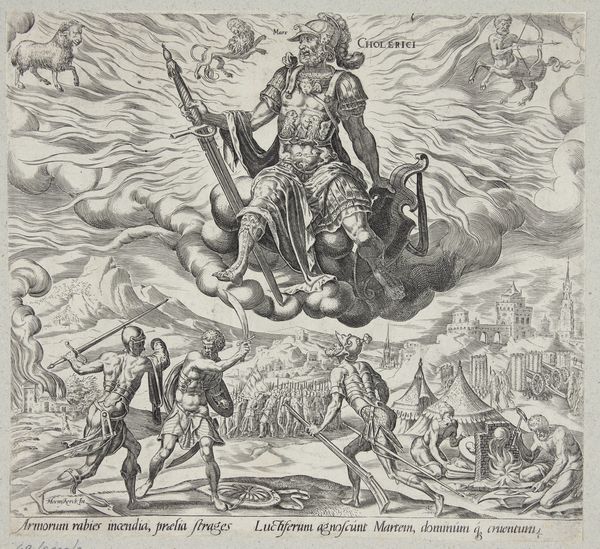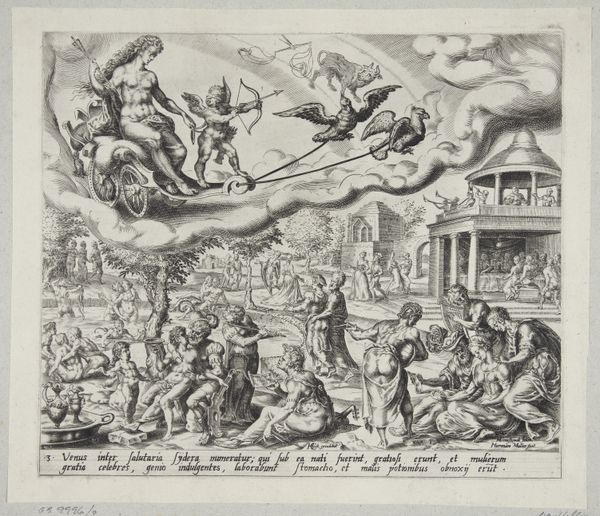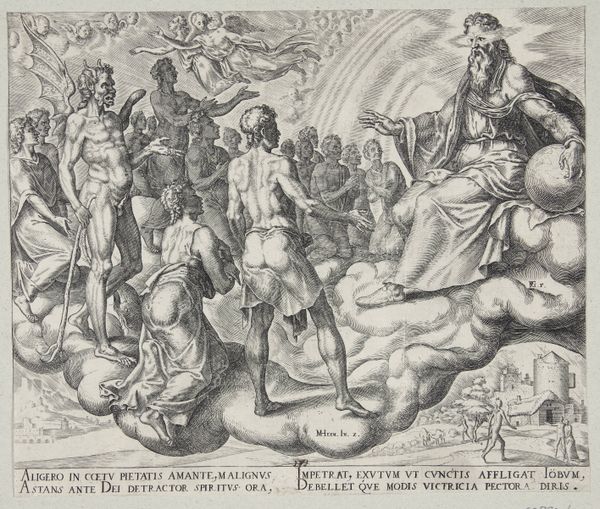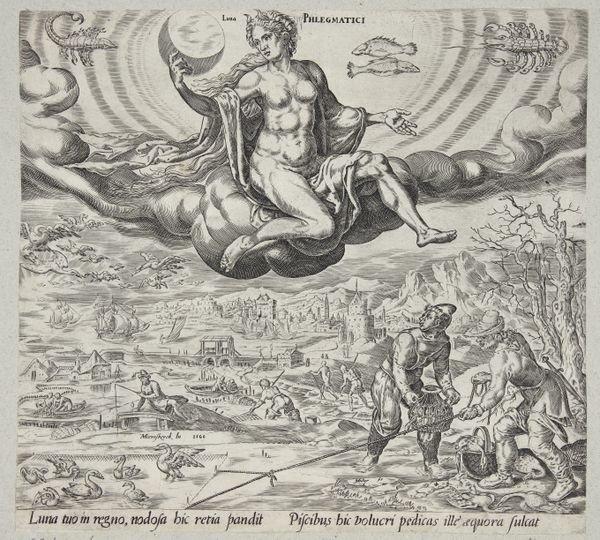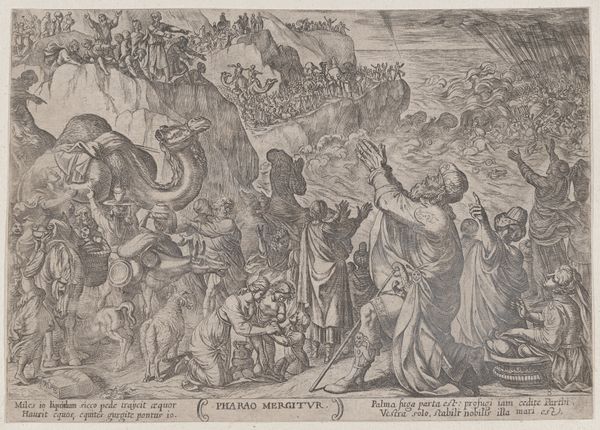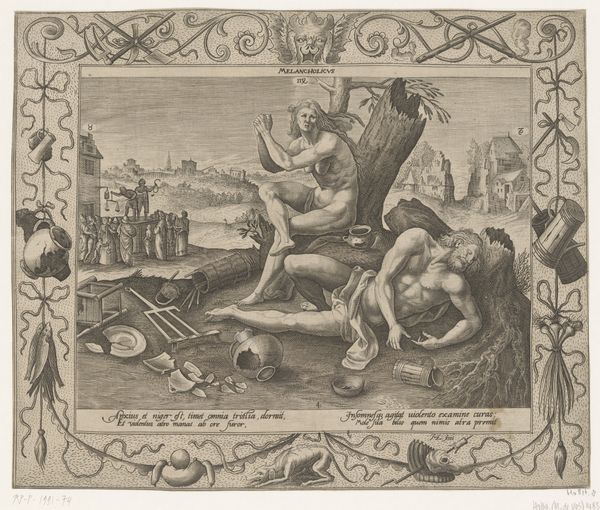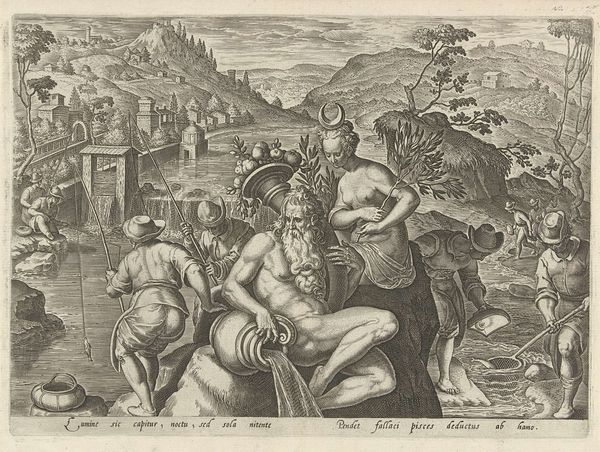
print, engraving
#
narrative-art
# print
#
mannerism
#
figuration
#
history-painting
#
engraving
Dimensions: 205 mm (height) x 244 mm (width) (bladmaal)
Curator: Philips Galle’s 1563 engraving, "The Lord Answering Job," pulls us into a world of faith and suffering rendered with the dramatic flair of Mannerism. Editor: Woah, okay, right off the bat—chaos! It’s all angles and emotion, everyone’s limbs are akimbo. I’m not sure whether to laugh or weep, honestly. It’s a biblical drama on caffeine. Curator: The print depicts a scene from the Book of Job. Galle emphasizes Job’s profound suffering as a commentary on faith, justice, and the arbitrary nature of misfortune within a divinely ordained world. Editor: So, we see Job down there, looking completely wrecked. The texture in this print, though! You can almost feel the grit and desperation. And then God—huge God—looms above, literally in the clouds with this ‘I have the whole world in my hands’ pose. What a statement about power. Curator: Note how Galle employs the conventions of Mannerism to heighten the emotional impact. Elongated figures, dramatic gestures, and a densely packed composition are all employed to evoke a sense of unease and spiritual turmoil. This is all heightened through the intersecting gazes. The poses indicate very theatrical emotions. Editor: That dense composition really does add to the tension, doesn't it? No room to breathe. And those guys next to Job, seemingly debating… they don't seem that helpful. Reminds me of every unproductive committee meeting ever! The power dynamic is fascinating and the role of the comforters makes it a human problem, not only a God-inflicted situation. Curator: Precisely. This engraving was produced during a period of religious and political upheaval in Europe. Galle's decision to represent this particular scene reflects broader anxieties about human suffering and theodicy during the Reformation. It also serves as a potent visual rhetoric that questioned hierarchies in early modern society. Editor: Looking at it now, it seems to make sense of suffering—giving form to intangible concepts. In the present day, Job's story makes us ponder resilience and reminds us there's beauty even in total despair. It also highlights our tendency to question everything. Curator: Indeed. It compels us to reflect on our own beliefs and societal structures through Job’s narrative of endurance and injustice. Editor: Ultimately, "The Lord Answering Job," even printed on paper, feels visceral and potent. That little slice of history still sparks very modern anxieties and reminds us that big questions, aren't really new at all.
Comments
No comments
Be the first to comment and join the conversation on the ultimate creative platform.
